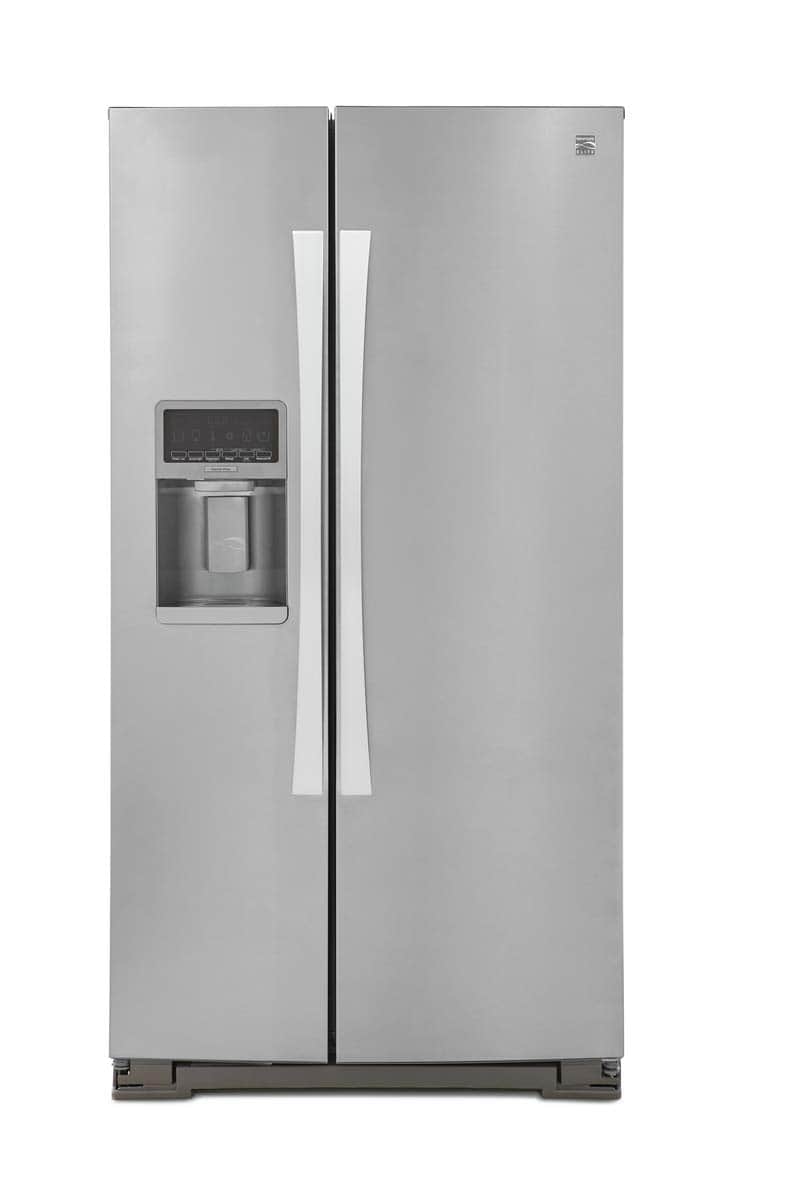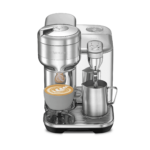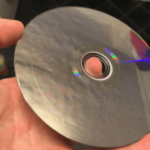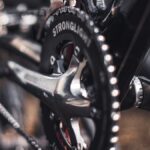If your Kenmore fridge’s ice maker is not producing ice, it could be because of mechanical issues, control board problems, or water supply complications. To tackle such issues, start by checking the most common causes such as making sure that the ice maker is on, checking for obstructions in the water line, and ensuring that the fridge temperature is set correctly. On some occasions, the problem could be due to a worn-out water inlet valve or a blocked water filter, both of which can impede the flow of water to the ice maker.
Why Your Kenmore Fridge Won’t Make Ice
Discovering your Kenmore fridge ice maker isn’t working can be a major inconvenience. Before calling a repair technician, here are some troubleshooting steps and common causes to get your ice flowing again.
Common Culprits
Here are the most frequent reasons behind a malfunctioning Kenmore fridge ice maker:
| Issue | Description |
|---|---|
| Frozen Fill Tube | The water supply to the ice maker can freeze. This is a common culprit. |
| Faulty Ice Mold Thermostat | This thermostat monitors the temperature of the ice mold; if malfunctioning, the ice maker won’t cycle. |
| Stuck or Clogged Water Filter | A clogged filter restricts water flow to the ice maker. |
| Control Arm Misaligned | The control arm senses the ice level; if stuck or misaligned, it will think the ice bin is full. |
| Malfunctioning Ice Maker | The internal components of the ice maker itself could be faulty. |
Troubleshooting Steps
- Check the Basics: Ensure the ice maker is plugged in, turned on, and the water supply valve is open.
- Inspect the Fill Tube: Look for signs of freezing. You can thaw it with a hair dryer (not direct heat).
- Change the Water Filter: If your fridge has one, replace the water filter.
- Examine the Control Arm: Make sure it can move freely and isn’t jammed.
- Reset the Ice Maker: Check your fridge manual for reset instructions specific to your model.
Advanced Troubleshooting
If the above steps don’t solve the problem, you may need to:
- Test the water inlet valve: This requires basic electrical testing using a multimeter.
- Inspect the ice mold thermostat: This also requires a multimeter to test for continuity.
- Investigate the ice maker assembly: Look for damaged or stuck components.
If you’re uncomfortable with DIY repairs, always consult a qualified appliance technician.
Kenmore Fridge Ice Maker Not Working: Troubleshooting Guide
| Possible Cause | Solution | Additional Notes |
|---|---|---|
| Freezer temperature too high | * Check the freezer temperature setting. It should be between 0°F and 5°F (-18°C and -15°C). * Clean the condenser coils located at the back of the fridge to improve airflow and cooling efficiency. * Ensure proper ventilation around the fridge, allowing at least 2 inches of space on all sides. | If the temperature seems inaccurate, consider replacing the thermostat. |
| Water supply issue | * Check if the water shutoff valve behind the fridge is open. * Replace the water filter if it’s clogged (typically every 6 months). * Ensure the water line is not frozen or kinked. Thaw if necessary using a hair dryer on low heat, keeping a safe distance. | If unsure about the water pressure, contact a plumber to check. |
| Ice maker malfunction | * Cycle the power to the refrigerator. Unplug it for at least 30 seconds, then plug it back in and wait for it to restart completely. * Check the ice maker arm for proper movement and any obstructions. * If the above steps fail, the ice maker itself might be faulty and require replacement. Consult a qualified appliance repair technician for further diagnosis and repair. | Consult your Kenmore fridge manual for specific instructions on accessing and testing the ice maker. |
| Other potential causes | * Clogged water dispenser line: Clean the dispenser line with warm water. * Faulty control board: This is a more complex issue and might require professional repair. | Consider the age and value of your fridge before proceeding with a complex repair. |
Additional Tips:
- Refer to your specific Kenmore fridge model’s user manual for detailed troubleshooting steps and instructions.
- Before attempting any repairs, ensure the refrigerator is unplugged for safety reasons.
- If you are uncomfortable troubleshooting or suspect a more complex issue, consider contacting a qualified appliance repair technician.
Further investigation might reveal issues with the ice maker’s components, such as the control board or the motor. The control board is responsible for providing power to the ice maker; if it is faulty, the ice maker may not function at all. Meanwhile, a malfunction in the ice maker’s motor or a broken part within the assembly can also prevent ice from being dispensed. Before taking any extensive repair steps, it is crucial to refer to the fridge’s manual and follow manufacturer instructions to prevent further damage or voiding warranties.
Key Takeaways
- A Kenmore fridge ice maker not working can be due to a variety of issues, from mechanical faults to water supply problems.
- Troubleshooting begins with simple checks like ensuring the ice maker is on and inspecting for water line blockages.
- Repair or replacement may be required for faulty components such as the water inlet valve or control board.
Identifying Common Issues and Their Causes
When a Kenmore refrigerator’s ice maker stops working, several issues may be to blame. This section outlines faults a user might encounter, broken down into categories of water supply, electrical and mechanical, and temperature and defrosting.
Water Supply Problems
Water Inlet Valve: If the ice maker gets no water, the water inlet valve might be defective. One should check if the valve has power and receives a signal to open during the ice-making process. Low Water Pressure: Low pressure can impede water flow to the ice maker. The manufacturer typically recommends a minimum pressure of 20 psi.
Clogged Water Filter: A filter clogged with debris restricts water flow to the ice maker. It should be replaced regularly, according to manufacturer guidelines, to ensure proper water quality and flow rate.
Frozen or Kinked Water Line: Ice formation or bends in the water supply line can block water from reaching the ice maker. Thawing a frozen line or straightening kinks should resolve this.
Electrical and Mechanical Failures
Faulty Ice Maker Module: The ice maker module coordinates the mechanical functions of the ice maker. If defective, it might necessitate replacement to restore functionality.
Damaged Wiring: Check for any signs of damaged or loose wiring. Using a multimeter can help diagnose breaks or shorts in the electrical circuit.
Main Control Board: A malfunctioning main control board may fail to send power to the ice maker. If other components check out, this board might be the problem.
Temperature and Defrosting Issues
Improper Freezer Temperature: The freezer should maintain a temperature between 0 to 5 degrees Fahrenheit (-18 to -15°C). Temperatures above 10°F (-12°C) may hinder ice production.
Frost Accumulation: Excessive frost on the evaporator coils indicates a problem with the defrost system. A functional defrost system is critical for maintaining the right temperature and operation.
Defective Thermostat: A thermostat that does not accurately gauge the freezer’s temperature can prevent the ice maker from cycling on. One should test the thermostat’s continuity with a multimeter.
Condenser Fan Failure: If the condenser fan is not working properly, the freezer might not cool sufficiently, affecting the ice maker’s performance. Coils covered in debris also impede the fan’s function.
Repair and Replacement Guide
The key to successfully repairing and replacing a Kenmore refrigerator’s ice maker lies in a methodical approach to troubleshooting the mechanism, attending to regular maintenance, and recognizing when professional assistance is necessary.
Step-by-Step Troubleshooting
To diagnose issues with your Kenmore refrigerator’s ice maker, follow these precise steps:
- Check Freezer Temperature: Ice maker performance is optimal when the freezer is set between 0 and 5 degrees Fahrenheit (-18 to -15C). Use a thermometer to verify the temperature.
- Inspect Condenser Coils: Dirty coils can lead to inadequate cooling. Turn off your refrigerator and clean any debris or dust from the coils with a coil brush.
- Test the Door Switch: If the door switch is faulty, the ice maker will not work. Test it with a multimeter and replace if there is no continuity.
- Examine the Water Supply: Low water pressure below 20 psi can impair ice production. Check the supply valve for any blockage and ensure appropriate pressure levels.
- Evaluate the Ice Maker Mold Thermostat: It should initiate a cycle when the temperature is around 15 degrees Fahrenheit. If defective, it needs replacing.
- Inspect the Ice Maker Tray: Look for an icy buildup which may indicate a leaky water inlet valve that needs replacement.
- Ensure the Ejector Arm: is not obstructed, and check that the heating element that helps release the ice cubes is functioning properly.
If the troubleshooting hasn’t helped to resolve the issue, resetting the Kenmore refrigerator main control board or using the reset button on the ice maker (if available) might reboot the system.
Maintaining Your Kenmore Ice Maker
Regular maintenance of your Kenmore ice maker can prevent most issues:
- Replace the Water Filter: Every six months, change the water filter to prevent clogging and to maintain water flow.
- Defrosting: Occasionally defrosting the ice maker tray can help eliminate any frozen blockages.
- Cleaning: Regularly wipe down the ice cube tray and the ice dispenser to remove any residue or debris that could hinder operation.
When to Seek Professional Help
If after these steps the ice maker is still not operating correctly, it might be an indicator of a more complex problem that requires professional assistance. Symptoms such as a frozen auger motor, a fridge that continuously cycles on and off, or issues with the dispenser control board suggest that you might need to source replacement parts or consult an expert for repairs. Remember, working on a refrigerator can involve risks like electrical shock, and should not be attempted without proper safety precautions.
Frequently Asked Questions
This section aims to guide you through resolving common issues with Kenmore refrigerator ice makers.
Why might the ice maker in my Kenmore refrigerator not produce ice?
If a Kenmore refrigerator’s ice maker is not producing ice, it may be due to a faulty ice maker switch, mold thermostat, or control board. Additionally, checking for a proper freezer temperature and ensuring it isn’t over 100F is crucial.
How can I troubleshoot my Kenmore ice maker that isn’t working despite the water dispenser functioning?
Troubleshooting a non-functioning ice maker begins with inspecting the water pressure and the condition of the filter. A clogged filter or a defective water inlet valve might need replacement. The freezer temperature should also be set correctly to facilitate ice production.
What steps are involved in resetting a Kenmore refrigerator’s ice maker?
To reset the ice maker, one must typically locate the on/off switch or button. If the ice maker has a reset feature, it is usually a button or a lever that needs to be pushed or lifted. After performing the reset, observe the ice maker for a cycle to initiate ice production.
What are common issues that could cause a Kenmore side by side refrigerator’s ice maker to stop working?
For side-by-side Kenmore refrigerators, common issues include clogged filters, misaligned fill valves, or a freezer that is not at the ideal temperature. Make sure the fridge is level, and the water lines are free from any blockages or kinks.
How do I diagnose and fix a non-functioning ice maker in a Kenmore bottom freezer?
In a Kenmore bottom freezer, check for frozen water lines that may block water flow to the ice maker. Cleaning the lines with a vinegar solution can help remove any clogs due to hard water. Also, ensure that the ice level control board is functioning correctly.
What should I check if my Kenmore Elite refrigerator’s ice maker isn’t making ice but is dispensing water?
For Kenmore Elite models, issues can occur with the door switch, which if defective, may stop the ice maker from working. It’s also essential to validate that the control board is sending voltage to the ice maker and that the child lock is not activated.







